So far, the use of water purifiers or water purifiers has become more and more widespread, but do you really understand water purifiers? Today, Susan will take you and your family to understand water purifiers more clearly and thoroughly from multiple aspects. The content is a bit long, Susan hopes that everyone will read it carefully and patiently.
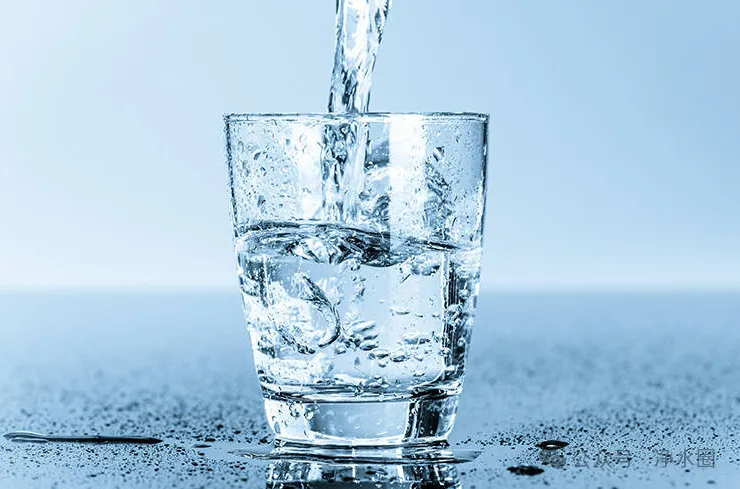
A water purifier is a water treatment device that deeply filters and purifies water according to the requirements for water use. Water purifier can effectively filter out rust, sand, colloids in water, and adsorb chemical agents such as residual chlorine, odor, discoloration, pesticides, and bacteria, germs, toxins, heavy metals and other impurities in water. Its main working principle is to apply a certain pressure to the water and use various filter materials to intercept harmful substances in the water, while water and beneficial mineral ions can pass normally if they hold a "green code".
►1. Development History
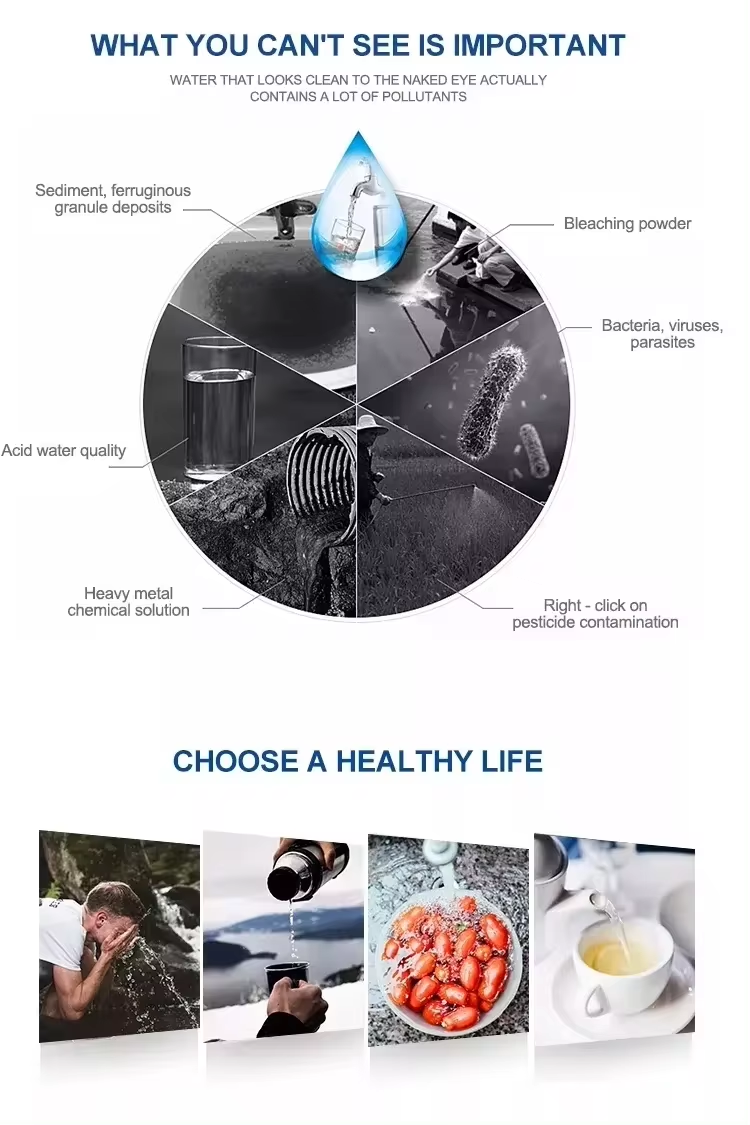
The national industry standard for water purifiers in China was promulgated in 2013. The drafting meeting for the four national/industry standards for water purifiers, namely, "Special Requirements for Safety Ultraviolet Radiation Water Treatment Appliances for Household and Similar Electrical Appliances", "Special Requirements for Safety Hot and Cold Water Dispensers for Household and Similar Electrical Appliances", "Ultraviolet Sterilizers for Household and Similar Water Purifiers", and "Pressure Tanks for Reverse Osmosis Pure Water Machines and Nanofiltration Water Purifiers for Household and Similar Purposes" was held in Kunming, Yunnan Province from May 17 to 19, 2013. Among these four standards, the first two are national standards for water purifiers, which are mandatory safety standards; the last two are industry standards, which are recommended product standards.
History of water purifier development
In the early 19th century, a very serious water pollution incident occurred in the Rhine River (one of the three major water pollution incidents in the world). In 1826, the Rhine River was polluted and affected a small mountain village in Bonn, Germany. The water had affected the normal life of the local people. In order to drink clean water, Paul Eric, who was only 13 years old, decided to use his superhuman wisdom to make a water purifier. After hundreds of failures, he finally successfully invented the world's first water purifier. The water purifier is a 20-layer thick gauze bag filled with quartz sand and activated carbon. The activated carbon is in the middle of the quartz sand. Then put the bag of water purification materials on the top of the barrel, pour the polluted water on the gauze, and let the water slowly flow into the barrel through multiple layers of penetration. Finally, the filtered water is clear and sweet. After many improvements, the filtering effect of the water purifier is getting better and better, which has attracted the attention of the local government.
With the general improvement of people's awareness of water purification, the water purifier industry has gradually emerged. The development of the domestic drinking water purification industry began in the 1980s.
Water is the source of life, and the quality of drinking water is closely related to people's health. According to a survey by the World Health Organization (WHO), 80% of diseases and 50% of child deaths in the world are related to poor drinking water quality.
After years of publicity and popularization of drinking water and health knowledge, people have gradually understood the impact of drinking water quality on human health and paid more attention to drinking water safety, which provides a great market prospect for the production of water purifier products.
Household water purifiers are already in use by 95% of households in developed countries in Europe and the United States.
Since 2000, water purifier manufacturers have grown rapidly, and the water purifier industry has recovered and grown rapidly.
►2. Characteristics

The function of a water purifier is to filter out floating objects, heavy metals, bacteria, viruses, residual chlorine, silt, rust, microorganisms, etc. in the water. It has high-precision filtering technology. The water purifier used in the home is a five-stage water purifier filtering technology or a six-stage water purifier filtering technology. The first stage of the five-stage filtering technology is the filter element, also known as the PP cotton filter element (PPF), the second stage is the granular activated carbon (UDF) filter element, the third stage is the precision compressed activated carbon (CTO) filter element, the fourth stage is the reverse osmosis membrane or ultrafiltration membrane, and the fifth stage is the post-activated carbon (small T33). The six-stage water purifier filtering technology finally adds a first-level filtering technology for weak alkaline energy bars (PPF filter element + granular activated carbon + sintered activated carbon + ultrafiltration membrane + post-activated carbon + weak alkaline energy bars). The water purifier is not only suitable for areas with serious tap water pollution, but also can filter out residual chlorine in regular tap water, and at the same time can improve the taste of water.
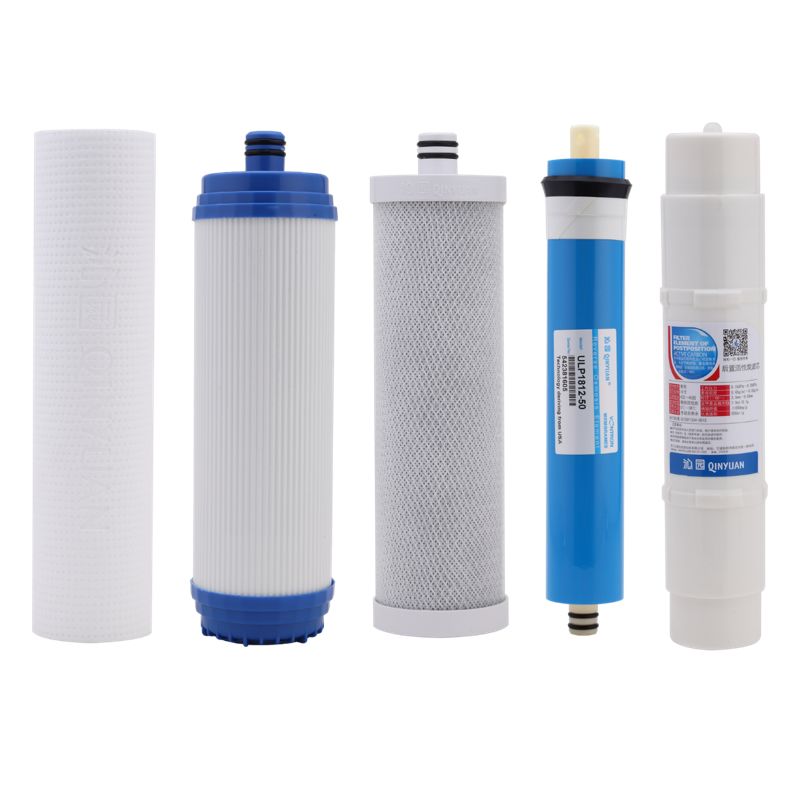
Water purifiers are not only suitable for areas with serious tap water pollution, but can also filter out residual chlorine in regular tap water and improve the taste of water. In August 2013, the General Office of the National Health and Family Planning Commission issued the "Management Standards for Labels and Instructions of Drinking Water Hygiene and Safety Products", which clearly stated that "acidic water", "alkaline water", "activated water", "small molecular cluster water", "functional water", "energy water", "oxygen-enriched water" and other contents should not be marked on the labels and instructions of water-related products.
►3. Functional Uses
First level: Microfiltration membrane: Microfiltration membrane removes various visible objects/dust and impurities in tap water. These particulate matter comes from aging pipes, rust, secondary pollution of roof water tanks, etc.
Second level: Compressed carbon: Compressed carbon removes chlorine and organic impurities, such as harmful pesticides. It can also absorb odors, colors and smells produced by organic compounds in water, which come from tap water disinfection byproducts.
Third level: Ultrafiltration membrane: Ultrafiltration membrane can remove bacteria, viruses, spores and other substances in water.
Fourth level: Filter life indicator: The device is designed with a gear structure. As the water flows through, the gear rotates to make one of the internal axes move upward until the outlet is blocked and the water cannot flow through. That is, the total amount of water passing through the water purifier is calculated through the designed stroke, so as to ensure that the water outlet is safe.
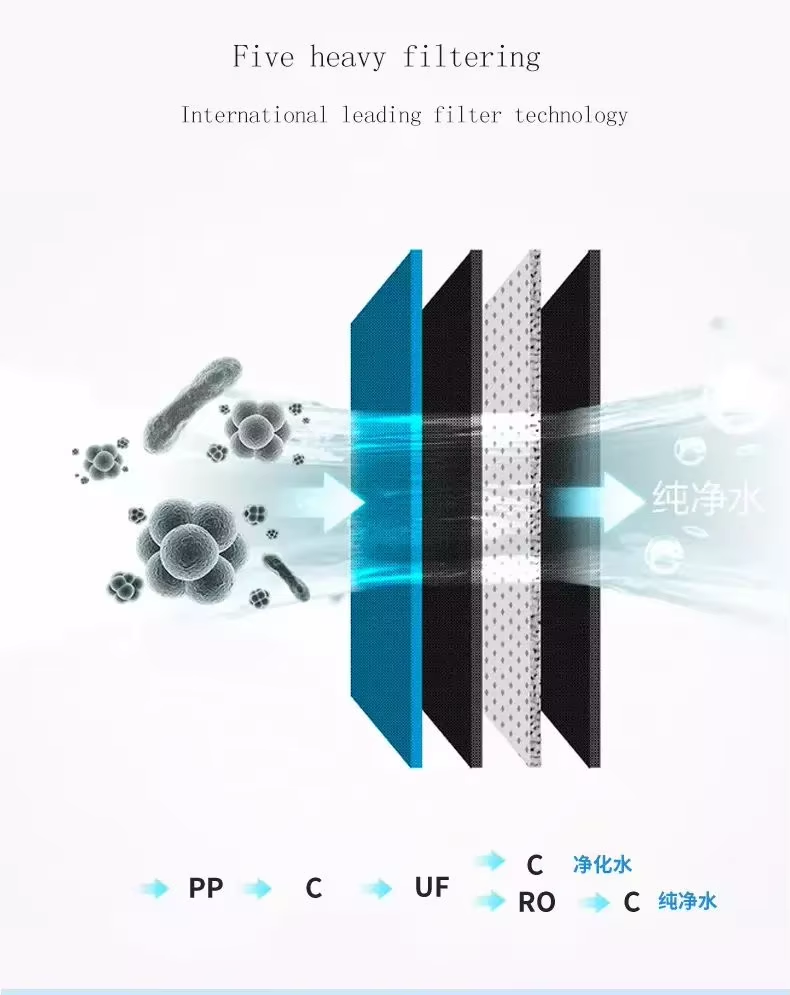
Most water purifiers adopt the progressive structure of the resistance screening filtration principle, which is composed of multi-stage filter elements connected end to end. The filter elements are arranged in order from low to high precision to achieve multi-stage filter elements to share and intercept dirt, thereby reducing filter element blockage and the number of manual sewage discharge, disassembly and cleaning, and extending the cycle of filter element replacement. Another new design idea is to apply the self-cleaning structure of the principle of quality separation and circulation. Its design idea is no longer to provide as much space as possible for storing dirt, but to adopt the principle of quality separation to separate a small part of clean water, while at the same time letting the raw water flow as usual so that the dirt is taken away in time with the water flow, so as to achieve the goal of running water without rotting. In this way, purified water is obtained, and dirt will not or is not easy to precipitate in the machine, avoiding the formation of secondary pollution and greatly reducing the loss of filter elements. The water quality is better, safer, energy-saving and low-carbon. This new principle of self-cleaning water purifier won the gold medal of the 7th International Invention Exhibition. It has a one-in-two-out structure. It improves the traditional water purifier due to the one-in-one-out structural drawbacks that lead to the concentration of raw water impurities accumulating higher and higher in the machine and finally becoming sewage. Therefore, the self-cleaning water purifier does not have the concept of sewage and sewage purifiers, but washing water instead. With the improvement of living standards, the popularity of water purifiers will become more and more widespread, and new technology products are better meeting people's needs.
►4.Uses
The main diseases caused by water pollution are:
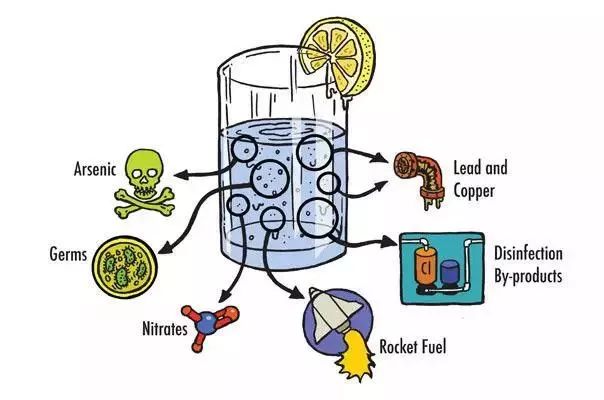
1. Cancer: Scientific research on cancer has found that cancer is the long-term accumulation of harmful substances in the body fluids inside and outside human cells, causing damage to cell tissues, thereby causing acute deterioration; and the spread of cancer cells is also carried out through cell body fluids. Other diseases, inflammations, etc. are also caused by harmful substances in intracellular water;
2. Stones: The function of the human liver is to decompose and synthesize various nutrients into nutrients necessary for the body, which are transported to the heart by blood, and then the heart transports nutrients to the internal organs and 60 trillion cells through blood vessels. The kidney is a filter. The blood coming back from various parts of the body is mixed with many wastes and impurities. After being filtered by the kidneys, it is excreted from the body through the urethra. At this time, some impurities often accumulate in the body, which will cause various stones over time.
3. Cardiovascular and cerebrovascular sclerosis: Long-term drinking of unclean water will cause some pollutants to settle on the blood vessel walls, accelerating cardiovascular and cerebrovascular sclerosis. Hypertension, heart disease, cerebral thrombosis and other diseases are directly related to long-term drinking of unclean water.
4. Fluoride poisoning: Long-term drinking of high-fluoride water can lead to poisoning. Excessive intake of "fluoride" in the bones will cause calcium in the bones to be replaced, causing osteoporosis and softening of the human body, making people hunchbacked, and in severe cases, they can also lose their ability to work. Before the age of 7 to 8, the surface of the teeth loses its luster, turns black and falls off. Once formed, it will remain for life.
5. Digestive system diseases, such as:
Escherichia coli - gastroenteritis, diarrhea, urinary tract infection, cholecystitis, etc.;
Salmonella - typhoid, paratyphoid, etc.;
Germanella - bacterial dysentery, etc.;
Hemolytic Streptococcus - hemolytic jaundice;
6. Diseases caused by excessive heavy metals, such as:
Lead - kidney disease, neuralgia, leprosy, etc.;
Arsenic - neuritis, acute poisoning and even death, etc.
Cadmium - bone deformation, back pain, poisoning, red blood cell disease, etc.;
Phosphorus - organophosphorus poisoning, dyspnea, etc.;
Calcium - stones, gout, etc.;
Mercury - neurotoxicity, mental disorder, madness, convulsions and even death;
Chromium - chronic kidney poisoning, causing renal dysfunction, cancer, etc.
7. Other diseases, such as:
Chloroform and other halogenated substances, fluorescent substances - carcinogenic;
Radioactive foreign matter - changes human genetic genes and causes corresponding diseases in the human body;
Pesticides, fertilizers, herbicides, nitrites - toxin accumulation, toxic hepatitis, hepatitis, nephritis, urinary system diseases, etc.
The water in the human body is renewed every 5 to 13 days. If the water that accounts for 70% of the human body is clean, then the cells in the human body will have a healthy and fresh environment. Healthy and clean water can enhance the body's immune ability and promote cell metabolism, so the cells in the body will lose the conditions for malignant transformation and toxin diffusion. The chance of people getting sick will naturally decrease. Experts warn us that while paying attention to seeking medical treatment, we should also pay attention to replenishing the cells with a steady stream of good water and strive to create a fresh and healthy living environment for the cells.
 ►5.Product Introduction (Classification Introduction)
►5.Product Introduction (Classification Introduction)
Water Purifier
Water purifiers can be divided into two categories according to the pipeline design level: progressive tightening water purifiers and self-cleaning water purifiers.
Traditional water purifiers are progressively
tightening water purifiers. Its internal pipeline design is loose at the front and tight at the back of the filter element. It is composed of
PP melt-blown filter element, granular carbon, compressed carbon, RO reverse osmosis membrane or ultrafiltration membrane, and post-activated carbon. Generally, these five levels are connected end to end. The intercepted matter is deposited inside the filter element and needs to be manually disassembled and cleaned regularly to ensure the normal operation of the machine.
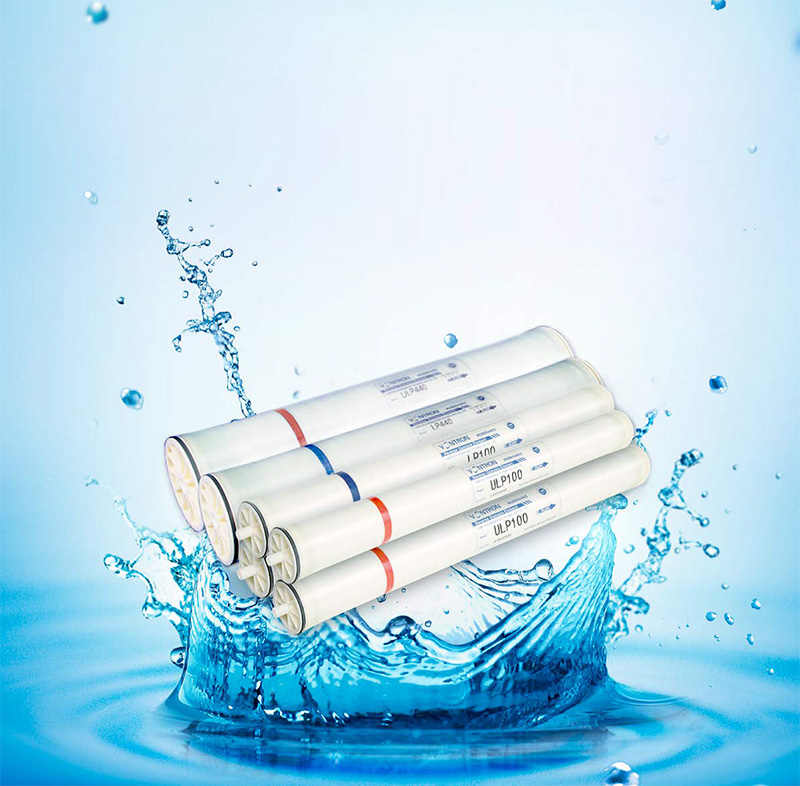
The other type is a more advanced
self-cleaning water purifier. Two channels are designed inside the machine, and a washing water channel is added. When the washing water used as ordinary domestic water passes through the channel, it flushes the filter element inside the machine, especially the raw water side of the membrane filter element, to achieve the effect of self-cleaning. The water that has already flowed away from the head and tail sections at the moment of opening and closing the washing faucet will discharge the intercepted dirt in time and quickly. This structure is reasonably designed, eliminating the trouble of manual disassembly and cleaning, and avoiding the re-contamination of the mechanism itself. At the same time, it reduces energy consumption costs. The self-cleaning water purifier adopts the new principle of quality-based circulation. Impurities are cleaned out at any time, the inner core is clean, and secondary pollution is avoided. See the working principle below for details.
However, consumers should be aware that self-cleaning water purifiers are different from the automatic sewage water purifiers, computer automatic flushing water purifiers and automatic backwashing water purifiers seen on the market. The former is self-cleaning of the whole machine, that is, all the filters inside the machine have a certain self-cleaning function. In layman's terms, a self-cleaning water purifier is equivalent to installing a garbage disposer on the pipeline, and the dirt is cleaned out at any time and does not stay in the machine. The traditional non-self-cleaning water purifier is equivalent to placing multiple trash cans in the room, and the dirt is usually temporarily stored in the machine, so it is necessary to regularly drain, disassemble and wash, and frequently replace the filter element.
 Intelligent water purifier
Intelligent water purifier
Refers to a water purifier equipped with an LED display screen, voice function, temperature monitoring and control, temperature alarm, water level control, water level monitoring and alarm and other functions.
►5.Market size
The market size of water purifiers will exceed 100 billion
Water purifier
Statistics show that water pollution incidents in China are frequent, and the unsafe water quality of drinking water sources involves a population of about 140 million people. The shocking water pollution has made ordinary residents increasingly demand safe drinking water, and home water purifiers have become very necessary.
According to the prospectus of water purifiers, the percentage of households using water purifiers increased from 4.7% in 2008 to 12.2% in 2012, and is expected to further increase to 32.0% in 2017; the number of households using water purifiers increased from 18.1 million households in 2008 to 50.5 million households in 2012, with a compound annual growth rate of 29.2%, and is expected to increase by 22.8% from 2013 to 2017.
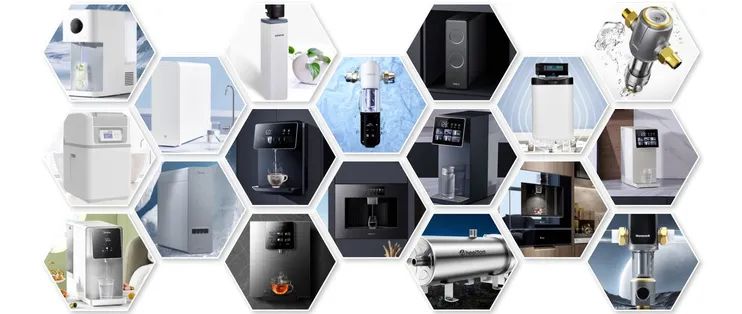 ►6 Market Analysis
►6 Market Analysis
Water Purifier
As water pollution continues to worsen, it is becoming increasingly difficult to drink healthy water. Therefore, water purifiers have been well received as health products for water drinkers, resulting in more and more brands in the water purifier market.
The most reports are about water. For example, the financial media New Century Weekly used "The Truth About Tap Water" as its cover feature to disclose the quality of domestic tap water: only 50% of tap water meets the standards. Tap water has always been the focus of public opinion. As the original plan to implement the new tap water standard will be postponed to 2015, tap water is related to people's normal life. Indeed, with the rapid development of modern industry, the degree of water pollution has also increased rapidly. Coupled with the interference of various factors in the transportation process of tap water, today's drinking water is becoming more and more worrying. Home water purifiers can better solve these problems.
►7 Category classification
Types of water purifiers can be divided into the following 10 categories according to the water treatment method:
 1. Softening method
1. Softening method refers to removing or reducing the hardness of water (mainly calcium and magnesium ions in water) to a certain extent. In the softening process, water only softens the water quality, but cannot improve the water quality.
2. Distillation method refers to boiling water, then collecting steam, cooling it and condensing it into liquid. Distilled water is extremely safe drinking water, but there are some issues to be further explored. Since distilled water does not contain minerals, this has become a reason for opponents to propose that people's life span is easy to age. In addition, the cost of using distillation is high, energy consumption, and volatile substances in water cannot be removed.
3. Boiling method refers to boiling tap water for drinking. This is an ancient method that is widely used in China. Boiling water can kill bacteria, but some chemicals and heavy metals cannot be removed, even if their content is extremely low, so it is still unsafe to drink.
4. Magnetization method refers to using the magnetic field effect to treat water, which is called water magnetization treatment.
The process of magnetization treatment is that the water passes through the magnet in the direction perpendicular to the magnetic lines of force, and the magnetization treatment is completed. China's magnetization treatment of water is still in the early stage of practice and research. Foreign water purifiers do not require magnetization functions because magnetized water does not belong to the scope of water purification, but belongs to medical issues.
5. Mineralization method
It refers to adding mineral elements (such as calcium, zinc, strontium and other elements) that are beneficial to the human body to water on the basis of purification. Commercially available water purifiers generally achieve the purpose of mineralization by adding medical stone to the water purifier, but the Ministry of Health has clearly stated: "Water-related products shall not promote any health functions."
6. Ozone and ultraviolet sterilization
These aspects can only sterilize, but cannot remove heavy metals and chemicals in the water. The bodies of killed bacteria still remain in the water and become pyrogens.
7. Activated carbon adsorption
It can be divided into the following three forms
7.1. Granular activated carbon is more commonly used, and is mostly made of carbon-containing materials such as wood, coal, and fruit shells (cores) through chemical or physical activation methods. It has a lot of micropores and specific surface area, so it has a strong adsorption capacity and can effectively adsorb organic pollutants in water. In addition, during the activation process, some oxygen-containing functional groups are formed on the non-crystalline part of the activated carbon surface. These groups make the activated carbon have chemical adsorption and catalytic oxidation and reduction properties, which can effectively remove some metal ions in the water.
7.2. Silver-infiltrated activated carbon combines activated carbon and silver, which not only has an adsorption effect on organic pollutants in water, but also has a bactericidal effect, and bacteria will not grow in the activated carbon, which solves the problem of high nitrite content in the water purifier. When water passes through silver-infiltrated activated carbon, silver ions will be slowly released to play a disinfecting and sterilizing role. Because activated carbon has a good effect on removing color, bromine, chlorine, iron, arsenic, mercury, cyanide, phenol, etc. in water, and the sterilization effect is more than 90%, it is used in small water purifiers.
7.3. Fiber activated carbon is a new type of adsorption material formed after the activation treatment of organic carbon fiber, which has a developed microporous structure, a huge specific surface area, and numerous functional groups. Foreign countries have made remarkable achievements in the use of fiber activated carbon for solvent recovery and gas purification, and have also done a lot of research on water treatment applications.
8. RO reverse osmosis membrane
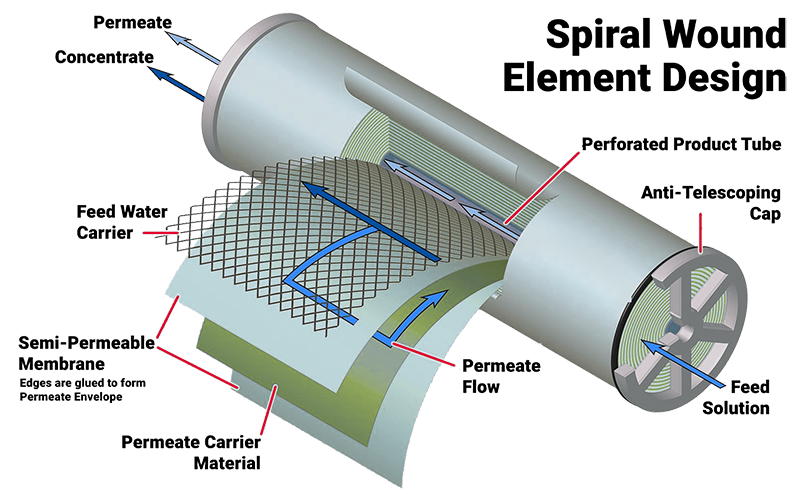
RO (Reverse Osmosis) is a machine (also called terminal water purification equipment) that produces pure water for direct drinking by filtering raw water (physical method) without adding any compounds through internationally popular reverse osmosis and other methods (also known as terminal water purification equipment). Municipal tap water that meets the requirements of the Chinese Ministry of Health's "Sanitary Standards for Drinking Water Quality" (2001) is used as raw water. The raw water is pre-filtered through two activated carbon filters (one granular activated carbon, one sintered activated carbon) and one PPF melt-spray filter. Pressure is then applied to the pre-filtered water to make it pass through a RO (Reverse Osmosis) membrane with a pore size of one ten-thousandth of a micron. Finally, the water's pH is adjusted through silver-loaded activated carbon (also known as small T33) made of fruit shells (coconut shells) (making the produced purified water taste sweet and mellow) to produce purified water.
The pure water produced by RO reverse osmosis water purifier is fresher, more hygienic and safer than bottled water. It has a wide range of uses: it can be drunk raw or boiled. The most prominent feature in this regard is that the kettle or electric thermos will never scale; pure water is used for cooking, which is more hygienic and more delicious; bathing with pure water can remove impurities on the skin, moisturize the skin, and achieve a natural beauty effect; it can provide water for small appliances such as humidifiers, steam irons, and beauty devices, and there will never be annoying scale; when used with an ice maker, the ice cubes produced are crystal clear and have no odor.
Reverse osmosis technology: The original name of reverse osmosis is REVERSE OSMOSIS. It was developed by NASA with the support of the government and the spending of billions of dollars after years of research. The principle of reverse osmosis is to apply a greater pressure than the natural osmotic pressure on the raw water side, so that water molecules can reversely osmosis from the high concentration side to the low concentration side. Since the pore size is hundreds or even thousands of times smaller than that of viruses and bacteria, various viruses, bacteria, heavy metals, solid solubles, polluted organic matter, calcium and magnesium ions, etc. cannot pass through the reverse osmosis membrane at all, thus achieving the purpose of softening and purifying water.
9. Microfiltration
The microfiltration method uses a microporous filter membrane made of cellulose or polymer materials, and uses its uniform pore size to intercept particles, bacteria, colloids, etc. in the water, so that they do not pass through the filter membrane and are removed. This microporous membrane filtration technology is also called particle density filtration technology, which can filter micron or nanometer particles and bacteria.
10. Ultrafiltration method
Ultrafiltration principle: Ultrafiltration is a pressurized membrane separation technology, that is, under a certain pressure, small molecular solutes and solvents pass through a special membrane with a certain pore size, while large molecular solutes cannot pass through and remain on one side of the membrane, so that the large molecular substances are partially purified. The ultrafiltration principle is also a membrane separation process principle. The ultrafiltration micropores are less than 0.01 microns, which can completely filter out harmful substances such as bacteria, rust, colloids, etc. in the water, and retain the original trace elements and minerals in the water.
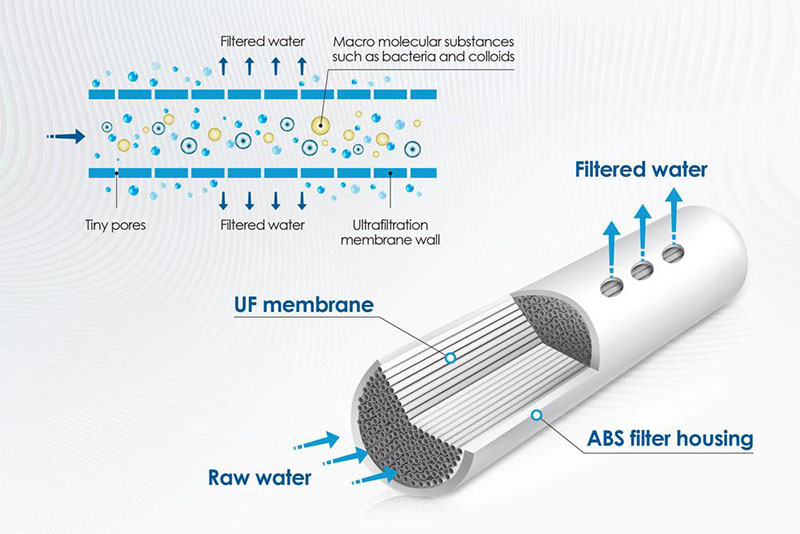
Ultrafiltration membrane: It is a microporous filtration membrane with consistent pore size specifications and a rated pore size range of 0.001-0.02 microns. Ultrafiltration membranes are divided into inorganic membranes and organic membranes according to the different membrane materials. Inorganic membranes are mainly ceramic membranes and metal membranes. Organic membranes are mainly made of polymer materials, such as polyvinylidene fluoride (PVDF), polyether sulfone (PES), polypropylene (PP), polyethylene (PE), polyacrylonitrile (PAN), polyvinyl chloride (PVC), etc. For example, the liter water purifier uses PVC alloy membrane. The advantages of this membrane are good hydrophilicity, high punching accuracy and corrosion resistance.
Ultrafiltration water purifier: The water produced by the ultrafiltration water purifier can not only completely filter out harmful substances such as bacteria, rust, colloids, etc. in the water, but also retain the original trace elements and minerals in the water to supplement our daily needs. Such water is safer than boiled water and healthier than purified water. To a certain extent, it can truly meet our daily drinking and water needs.
11. Composite type
When one process is difficult to remove harmful substances in water, two or more processes are used to form a composite type. Such as activated carbon adsorption, ultraviolet sterilization, activated carbon adsorption reverse osmosis, activated carbon adsorption microfiltration (ultrafiltration), polypropylene ultrafine fiber, activated carbon, microfiltration (ultrafiltration), etc. Among composite water purifiers, membrane technology composite water purifiers have excellent water purification performance, especially in removing microorganisms (bacteria, algae, etc.). Some of the high-quality water purifiers can directly drink the water, which has been welcomed by consumers and has become a hot spot in the current development of water purifiers.
The design and manufacture of water purifiers is a comprehensive science and technology. The design principle of water purifiers should be for the sake of users. In terms of water quality characteristics in various regions of China, organic pollution is serious along the Yangtze River and in densely populated areas, while small water supply enterprises and groundwater use areas in towns and villages across the country have bacterial pollution problems. Therefore, only some high-quality water purifiers can adapt to different water qualities across the country, so water purifier manufacturers should carefully design water purifiers that can adapt to different water sources but have good treatment effects according to the water quality conditions in different regions.
In short, water purifiers are related to the drinking water safety and health of millions of people. For this reason, the quality of the water purifier itself and the water quality must be taken seriously by manufacturers, and they must continue to absorb and adopt advanced technology and equipment to continuously improve the quality of water purifiers to meet the people's growing consumption needs.
►8 Filter function
 1. Polypropylene spray filter (PPF)
1. Polypropylene spray filter (PPF)
Filter function: remove solid matter such as mud, rust, and algae in the water.
2. Softening resin filter element
Filter element function: Softening filter element absorbs heavy metals and excess calcium, magnesium and other cations in raw water, softens hard water, anion exchange resin can only exchange anions, not cations, ion exchange resin can significantly reduce the hardness of water, reduce the precipitation of metal ions in the human body, reduce the probability of human stones, solve the scale problem, and improve the taste of water. It can be regularly placed in 6-10% sodium chloride (potassium chloride) solution for regeneration.
3. Granular activated carbon filter element (UDF)
Filter element function: remove residual chlorine, odor, and solid impurities in water
4. Compressed activated carbon filter element (CTO)
Filter element function: further remove residual chlorine, odor, and solid impurities in water.
5. Ultrafiltration membrane filtration (UF)
Filter element function: remove sediment, rust, suspended matter, colloids, and macromolecular organic matter in water.
6. Medical stone ceramic ball filter
Filter function: Medical stone ceramic balls contain more than 30 kinds of trace elements that are beneficial to the human body, such as selenium, zinc, nickel, cobalt, manganese, magnesium, calcium, etc. The starting waves emitted by these elements are the same as the starting waves of human cells. Human cells resonate and resonate with the waves emitted from the germanium stone, making human cell tissue more active, promoting blood circulation, enhancing metabolism, and eliminating waste in the body.
7. Far infrared mineralization ball filter
Filter function: Infrared activated mineralization balls have high infrared emissivity and high water absorption. They can fully release more than 20 kinds of trace elements necessary for the human body, such as zinc, lithium, iodine, selenium, etc., which are rich in this product, slowly and evenly into the purified water, so that the activated purified water contains more beneficial minerals. The new antibacterial material without heavy metals is used to achieve antibacterial function, and the antibacterial effect is safer and longer-lasting.
8. Energy filter element
Filter element function: The nano high-energy material produced by high-tech technology integrates activation, mineralization, weak alkalization, purification, ionization, anti-oxidation, negative potential, detoxification, antibacterial, sterilization and other functions. The main shaft filter element of the energy water machine generates small water molecules, ionization, negative potential to fight free radicals, and mineral water rich in various trace elements. The mineral absorption rate is about 70%-90%. Because of its strong activity and constant presence, it has strong dissolving power, penetration power, diffusion power, emulsification power, and cleaning power. It tastes sweet and has abundant electrolytes. It can be stored longer than the mineral water sold on the market, and the water quality is unparalleled.
9. Reverse osmosis filter element (RO)
Filter element function: Filtration accuracy is 0.0001 micron, which is the most effective way to remove calcium, magnesium, bacteria, organic matter, inorganic matter, metal ions and radioactive substances in the water. The crystal water purified by this device is crystal clear and sweet. The water filtered by RO membrane removes all the beneficial and harmful substances in tap water, and basically only has water molecules, so it is called "pure water". Pure water is recognized as the safest water in the world, but it is not necessarily the healthiest water. However, in order to supplement the trace nutrients needed by the human body, the general water purifier must be equipped with a post-filter element, which not only improves the taste, but also appropriately supplements the trace elements. There is no scientific research that can prove that long-term drinking of pure water will have side effects on the body.
 10. Small T33 (post-activated carbon)
10. Small T33 (post-activated carbon)
Filter function: can better improve the taste of water.
11. Activated carbon fiber (ACF) is finer than granular activated carbon, the filtration effect is fully improved, and the water flow rate is larger.
Filter evolution
Activated carbon has mainly gone through three stages, including powdered activated carbon, granular activated carbon, activated carbon rods, and activated carbon fiber. ACF (carbon fiber) is the third generation of new adsorption material after the widely used powdered activated carbon and granular activated carbon. It is made of fiber as raw material.
►9 Controversial incidents
The structures of household water purifiers are roughly coarse filtration, activated carbon adsorption, ion exchange resin, hollow fiber and reverse osmosis membrane. When choosing an ideal and practical water purifier, the following aspects should be considered:
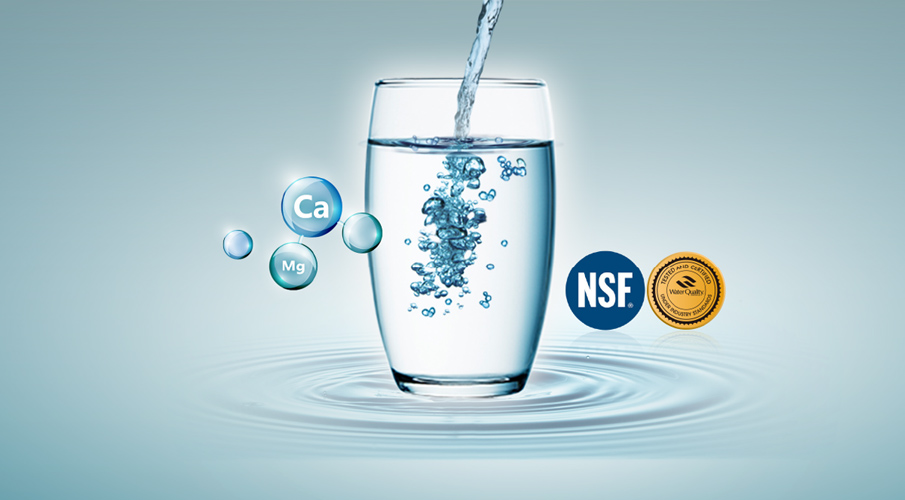 1. Whether there is a product health license.
1. Whether there is a product health license.
Users must recognize the importance of product quality when purchasing a water purifier. The Sanitary Supervision and Management Measures for Drinking Water stipulate that; obtain a health license from the superior health supervision department, and after identification by the technical supervision department, meet the national "Drinking Water Quality Standards".Also if water purifiers need to be exported to other foreign contries needs the CE,UL,NSF,FDA,etc.
2. It is crucial to choose a suitable filter element.
The first generation of water purifiers mainly use simple filtration such as activated carbon and ceramics, which are easy to breed bacteria and pollute water sources, and cannot achieve the effect of purifying water sources; the second generation of water purifiers use various artificial polymer membrane filtration, which is effective in removing harmful substances in water, but its fatal defect is that it filters out trace elements that are beneficial to the body. The third generation of water purifiers uses nano-microcrystalline filter element technology, which solves the defects of the second generation of water purifiers well and filters out harmful substances and heavy metals in water. Therefore, when you choose a water purifier, you must ask about the filtering technology and filter materials used to see if they meet your needs.
3. Whether it has safe and effective sterilization technology.
Water purification equipment uses two ways to sterilize. One is to add disinfectants. Disinfectants can kill some bacteria, but disinfectants contain trace amounts of chemical components that are harmful to human health; the second is ultraviolet sterilization. Ultraviolet sterilization technology is internationally recognized as one of the most effective sterilization technologies, because ultraviolet sterilization is safe and efficient, and can quickly kill almost all bacteria; and ultraviolet sterilization uses physical principles to sterilize, does not require any chemical agents, and will not have side effects on the human body.
4. Whether it has a complete after-sales service system.
Many consumers cannot find the repair service phone number or the address of the repair service company after purchasing certain brands. This situation makes consumers helpless and causes waste of resources. Many water purifiers have become decorations; the after-sales service of water purifiers is mainly focused on the replacement of filter cartridges. If the filter cartridges are not replaced for a long time, the water source will be polluted, and the water purifier will become a "sewage device". When choosing a water purifier, you must choose a perfect after-sales service, such as using a customer service system to track customer information, and reminding customers and companies to replace filter cartridges.
5. Choose a water purifier with a high performance-price ratio.

A. The water purification effect is different for different water purifier structures. Generally speaking, a one-stage filtration water purifier has a simple structure and is mainly based on activated carbon. Its filtration capacity is limited and can only be used for coarse filtration. The filtered water is best heated and boiled for drinking. Most of the one-stage filtration water purifiers are low-end water purification products, and the price of each unit is between 10 yuan and 150 yuan.
B. Multi-stage filtration water purifier. This water purifier has two levels of coarse filtration and a set of fine filtration, and the fine filtration mostly uses hollow fiber filter cartridges, and the filtered water can be drunk directly. Multi-stage filtration water purifiers are mid-range water purification products, and the price of each unit is between 300 yuan and 500 yuan. They are acceptable to the working class and are used more in families.
C. UF ultrafiltration nanofiltration membrane water purifier, composed of multi-stage pre-filtration and ultrafiltration membrane, can intercept most bacteria and harmful substances. It is the most commonly used direct drinking water purification device with the most common separation and filtration effect on the market. At the same time, it retains the mineral trace elements that are beneficial to the human body, and then uses the advantages of KDF and activated carbon to effectively inhibit the growth of bacteria and fungi in the water and remove the color and odor, ensuring that the filtered water can be used more safely and healthily. Moreover, the water output is relatively large and the wastewater discharge is small, so it is faster and more convenient to use in the family kitchen without waiting for a long time. It is a popular consumer product, and the price of each unit ranges from 200 yuan to 5,000 yuan according to different requirements.
D. RO reverse osmosis pure water machine is the most ideal water purification product for treating rural water and groundwater. It has three-stage pre-filtration, one-stage reverse osmosis membrane precision filtration and one-stage post-filtration. The filtered water is free of bacteria, viruses, heavy metals, pesticides, organic matter, minerals and peculiar colors and odors. It is a pure water that can be drunk without heating. This type of reverse osmosis pure water machine is a high-end water purification product, and the price of each unit is between 1,000 yuan and 5,000 yuan.
6. Purchase according to water quality.

1. The hardness of water quality in different regions is different. In the high-hardness water quality in northern China and the limestone area in the south, the calcium and magnesium ion content in the water is high, and it is easy to scale. You should choose a high-grade filter water purifier with an ion exchange resin filter element.

2. For urban tap water with heavy chlorine, color and odor, and high organic content, you can choose a household water purifier with a large activated carbon load. Because activated carbon has a strong adsorption effect on residual chlorine, color and odor in water, and has a significant removal effect on organic matter.
3. For the purification of urban and rural tap water with turbid water quality, you should choose a household water purifier with coarse filtration and fine filtration. For serious water pollution, it is required to completely filter out any impurities in the water and drink it directly without heating, you should choose a reverse osmosis pure water machine.
VII. Some basic principles for choosing a water purifier:
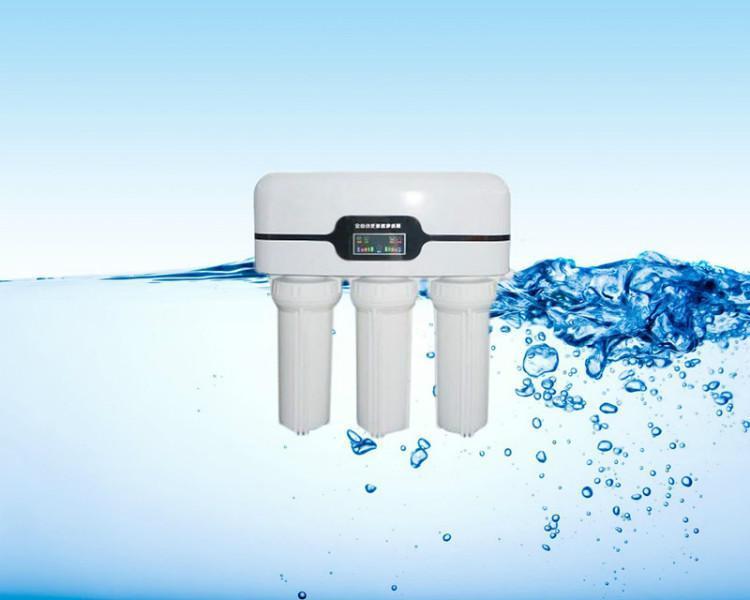
1. Water purification products have a high cost-effectiveness ratio: the product quality is good, the performance is stable; it is easy to use; the maintenance cost and operation cost are low; there are strong professional skills and good after-sales service.
2. Soft water products are used for domestic water, and water with a certain hardness (140mg/L-200mg/L) is used for drinking water.
3. In areas where the water hardness is below 170mg/L, it is best to choose a composite ultrafiltration machine.
4. In areas where the water hardness is within 170mg/L-250mg/L, it is best to use soft water for showering and washing clothes, and it is best to choose composite ultrafiltration water for direct drinking.
5. In areas where the water hardness is above 250mg/L, it is best to use soft water for showering and washing clothes, and choose partially softened water (softened water and unsoftened water are mixed in a certain proportion) for direct drinking water. Ultrafiltration water filtered by a composite ultrafiltration machine.
6. For water in areas with high fluoride, high salt and high sulfur content, choose a pure water machine as direct drinking water and supplement trace elements.
7. For areas with groundwater or heavy sand and rust, it is recommended to install a precision filter after the total meter.
Hope this article could be helpful for you to know more about the water purifier!If Any questions or any ideas/feedbacks ,or any enquiries for our water purifier products ,pls kindly contact us ,Susan is always waiting for you.
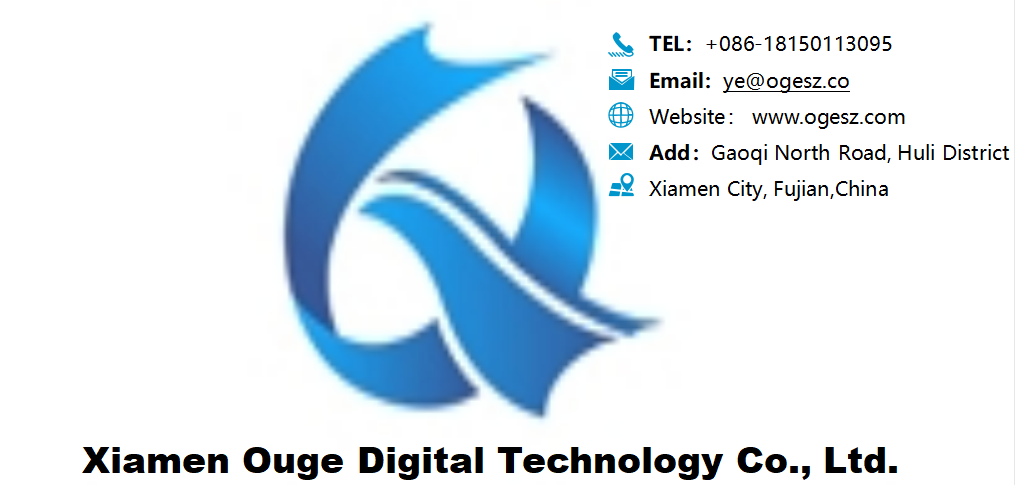





















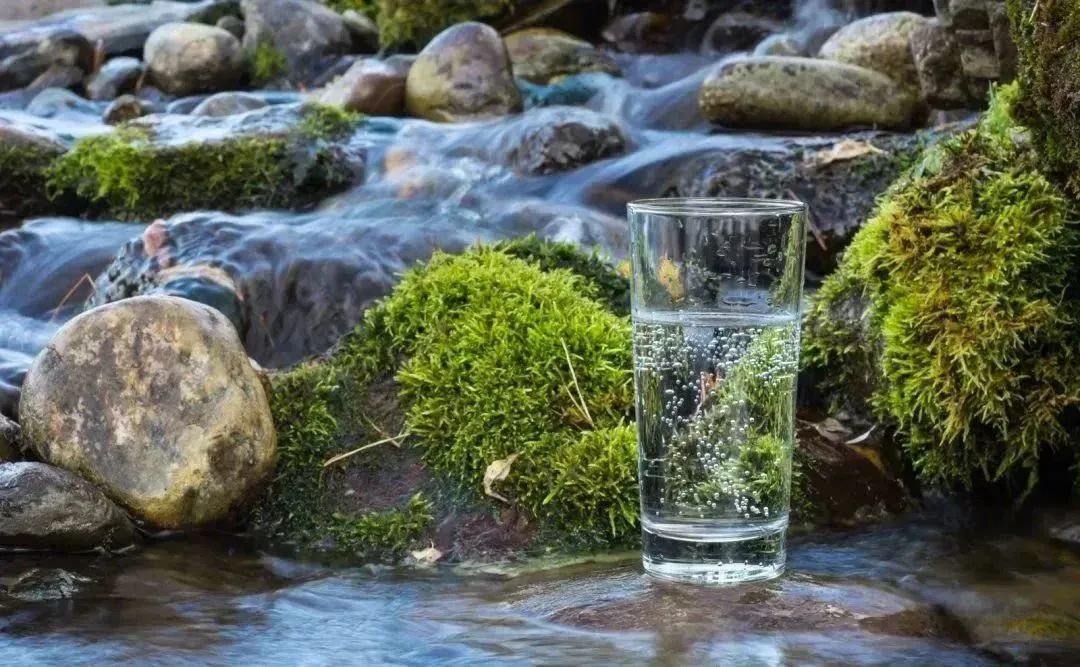 Avoid pitfalls | If I had known that I should choose a water purifier this way, I would never step into those pitfalls!
Avoid pitfalls | If I had known that I should choose a water purifier this way, I would never step into those pitfalls!
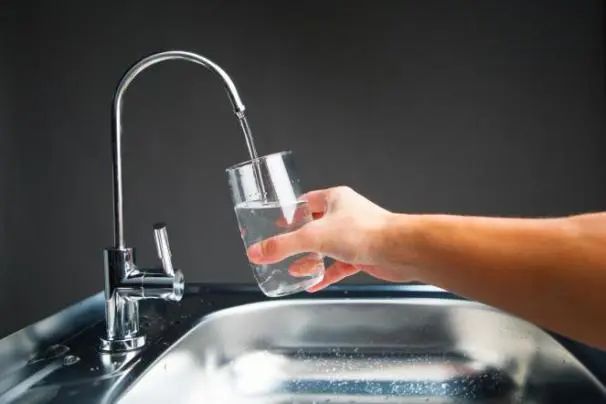 Is it necessary to install a Water Purifier System for tap water?
Is it necessary to install a Water Purifier System for tap water?
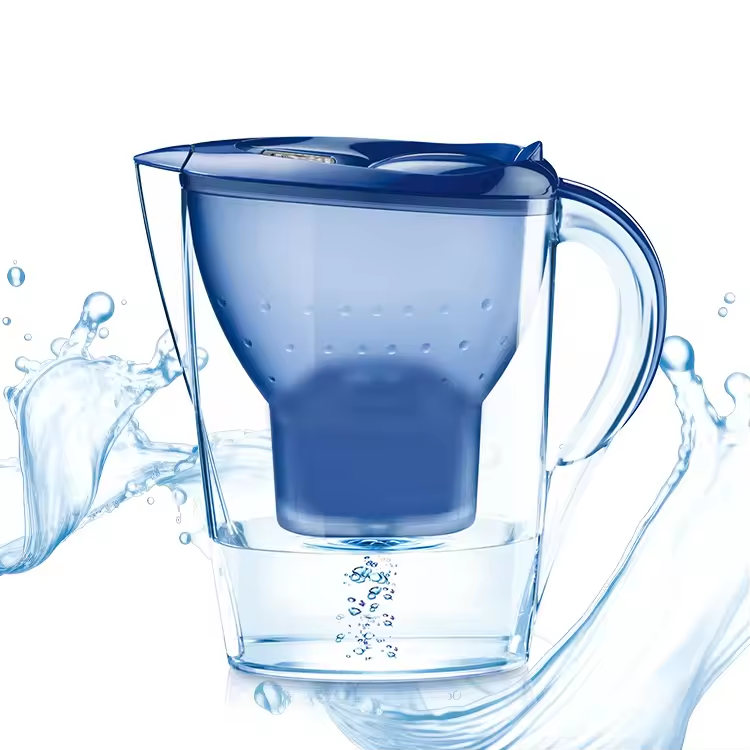 What are raw water, softened water, desalted water, pure water and ultrapure water?
What are raw water, softened water, desalted water, pure water and ultrapure water?